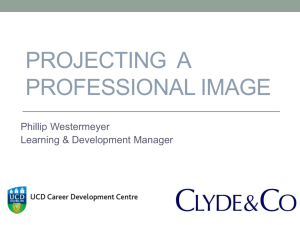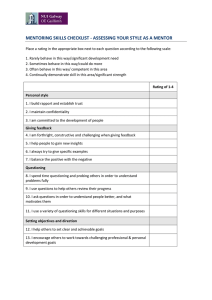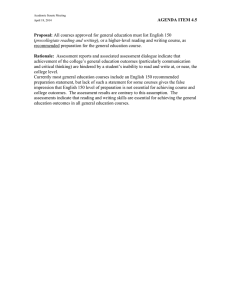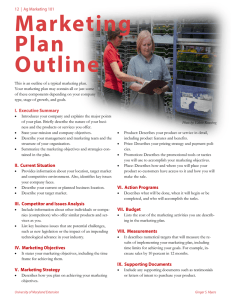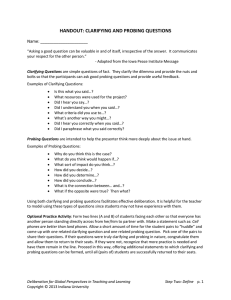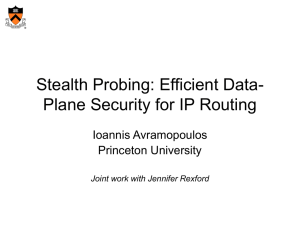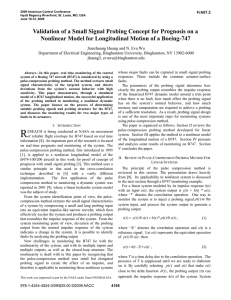100 200 300 400
advertisement
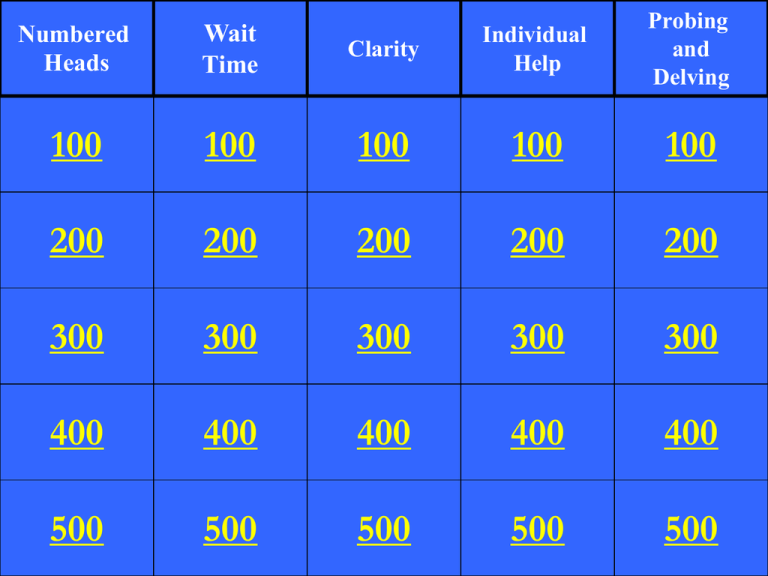
Clarity Individual Help Probing and Delving 100 100 100 100 200 200 200 200 200 300 300 300 300 300 400 400 400 400 400 500 500 500 500 500 Numbered Heads Wait Time 100 One way to ensure more equitable response opportunities is to do this. What is to stop calling on students who raise their hands? They may feel ignored. Who are students who have few opportunities to respond? Step two. What is the teacher announces the question or problem? The last role to be assigned. What is the reporter? This avoids long, drawn out whole group reporting which can become boring and tedious. What is the “be additive, not repetitive” rule? Typically, less than one second. What is the amount of time most teachers give for student responses? Inventor of the concept of "wait-time" as an instructional variable. Who is Mary Bud Rowe? It’s characterized by a 3 or more second period of uninterrupted silence that teachers deliberately take to consider what just took place. What is teacher pause-time? It’s the optimum period of silence that should follow teacher questions and students' completed responses. What is 3-5 seconds? The number of volunteered, appropriate answers by larger numbers of students greatly increases. What happens when teachers use 3 seconds of wait time? Providing clarity means the learning is this to ALL students. What is meaningful? This happens when the teacher tries to determine if students are confused. What is checking for understanding? These tools help teachers too explain. What are explanatory devices? These provide students with an overview of what activities they will be doing. What are agendas or itineraries? Pulling everything together at the end of the lesson. What is summarizing? Establishing a safe environment that encourages risk taking and questioning are critical to this. What is providing equitable individual help? Some students may be too embarrassed or confused to pursue the teacher’s attention and may miss out on this. What are opportunities for gaining understanding through questioning? Teachers tend to most often direct their attention to these students. Who are students perceived to be engaged in their work? By getting to know their students on a personal basis, teachers can create these. What are classrooms that encourage students to ask questions? Teachers can make it safe for everyone to ask questions by validating this. What is the worthiness of all questions? Research suggests that these students are more apt to be the recipients of teacher probes. Who are high achieving students? Seeing their teachers make a special effort to help them can enhance this. What is students’ self-confidence? When they do not respond, teachers are more likely to move on to another student than to offer assistance to answer. Who are lower achieving students? Probing is especially important for these students who may have begun to doubt their own capabilities and withhold effort. Who are lower achieving students? “Tell me more about…” and “What criteria did you use to…?” What are examples of probing questions?
